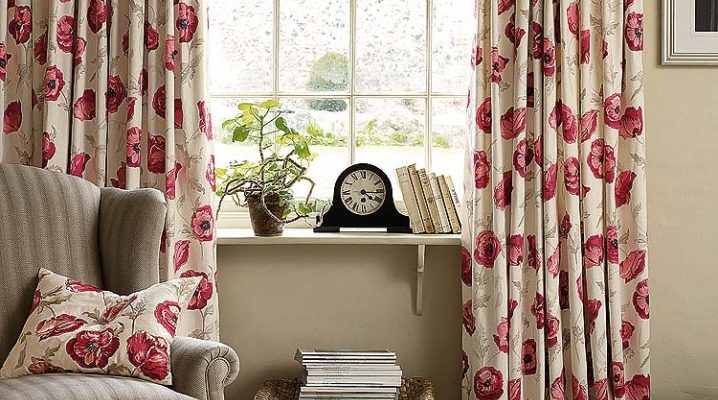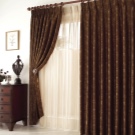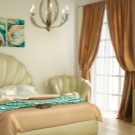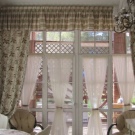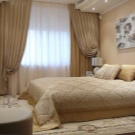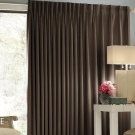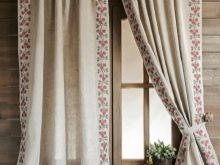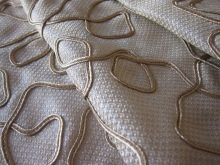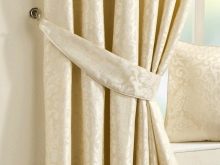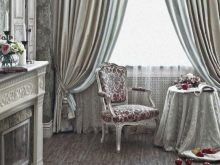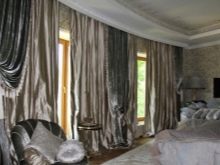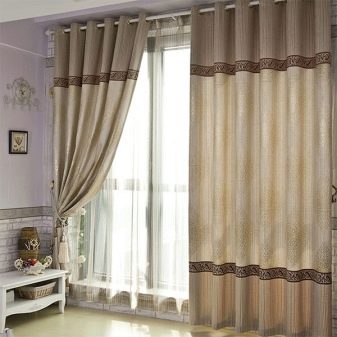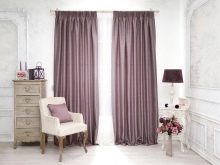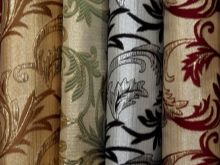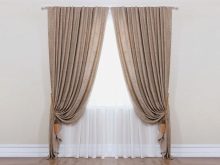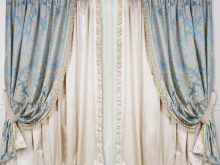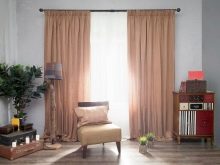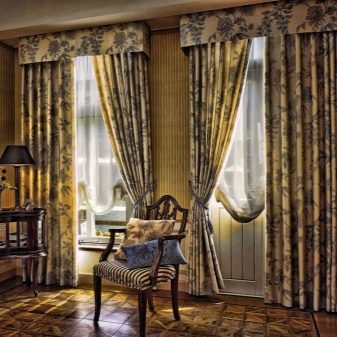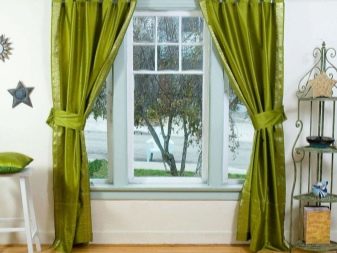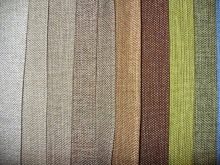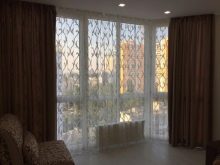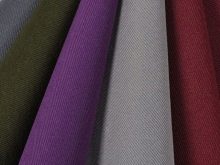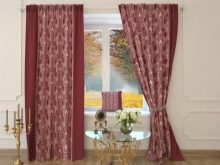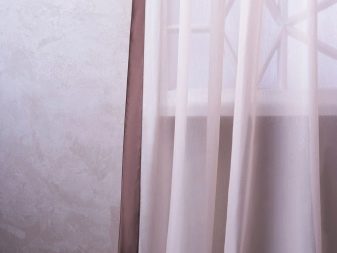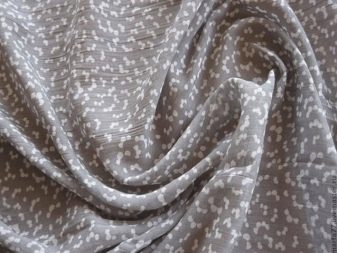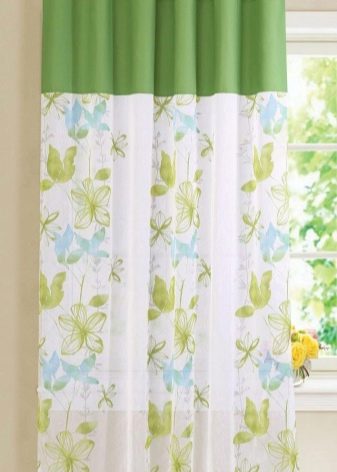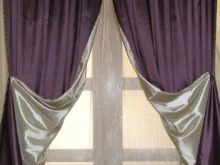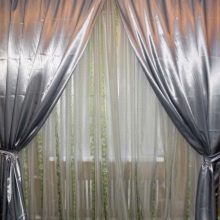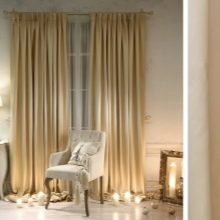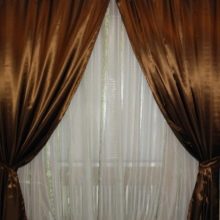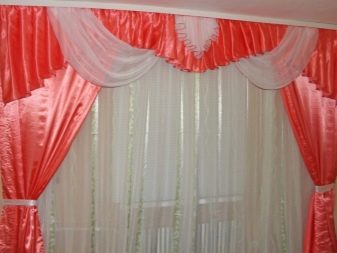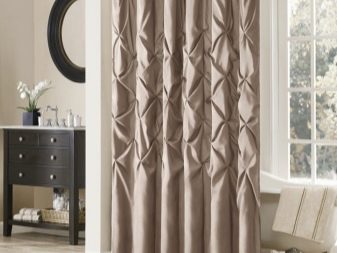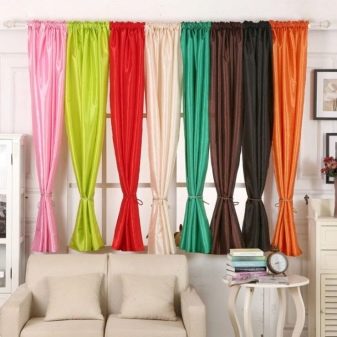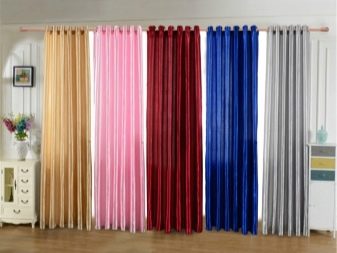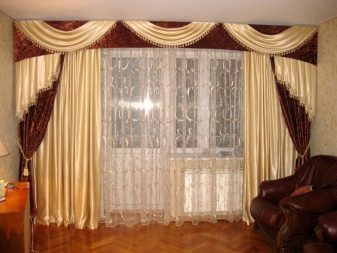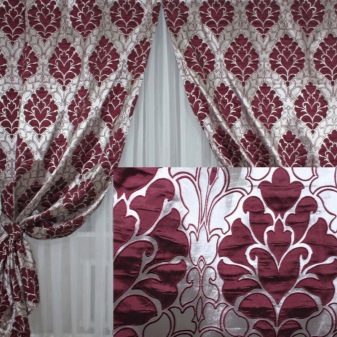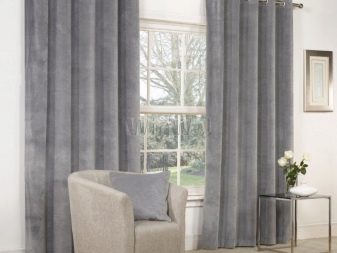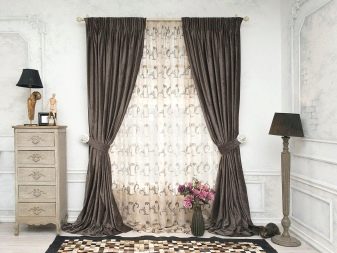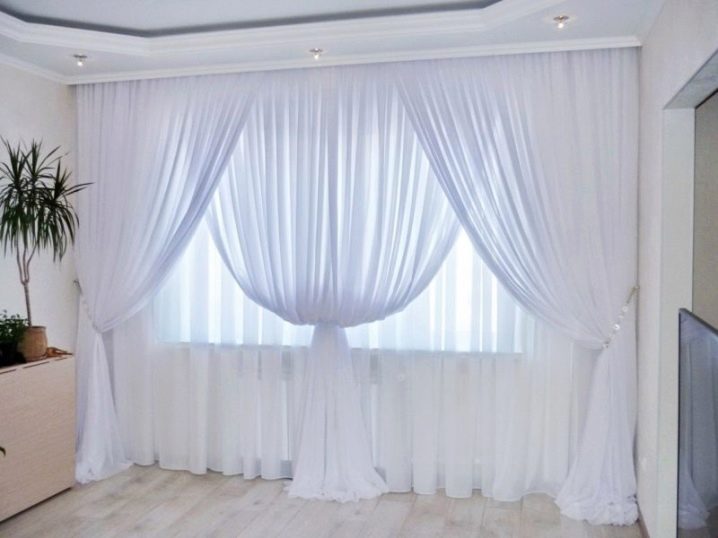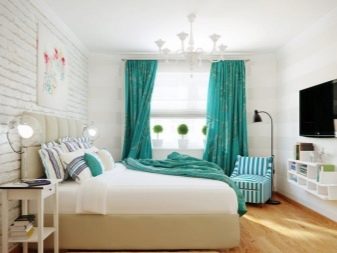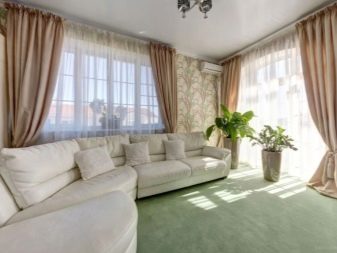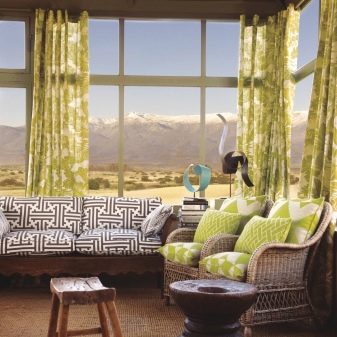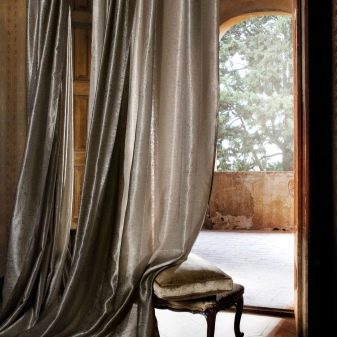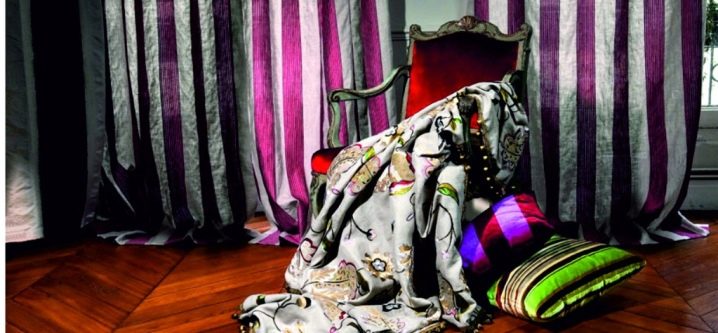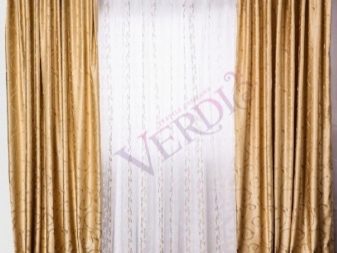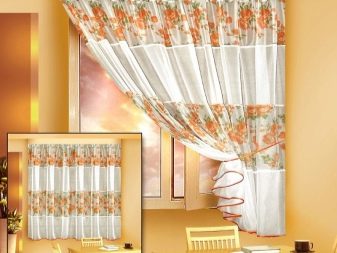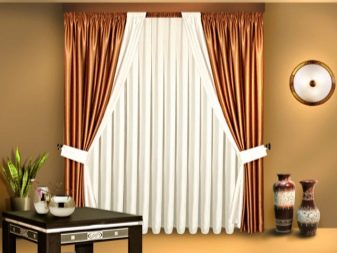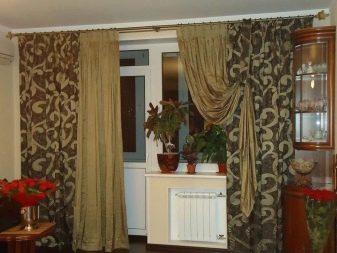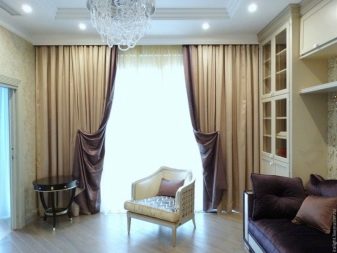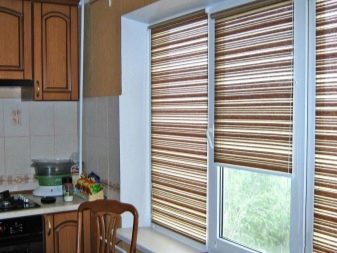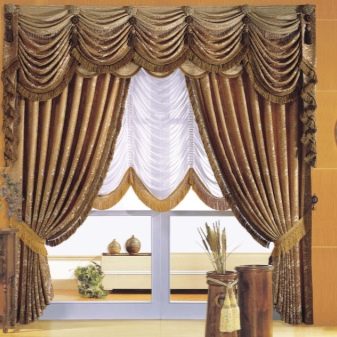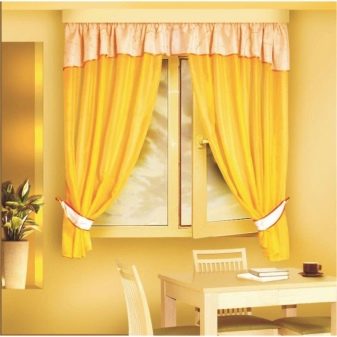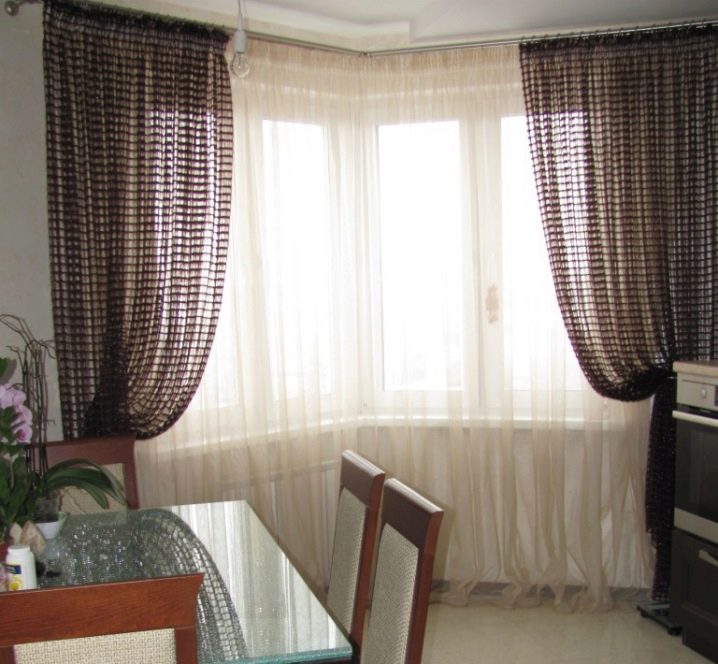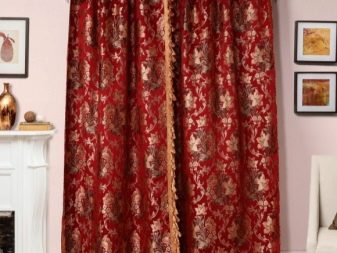Choosing the right fabric for curtains: a review of materials and manufacturers
Curtains are an integral part of any home. They not only protect the living space from the penetration of annoying sunlight, but also give the interior a more aesthetic, complete look. Curtains are made from various materials.
Types of fabrics in composition
Fabrics used in the manufacture of curtains may differ in their direct composition. There are natural, artificial and mixed versions, from which attractive and high-quality products are obtained, differing in their performance characteristics and properties. These features of the materials can not be ignored.
Natural
The most sought-after for many years are precisely natural fabric canvases.These include silk, cotton, linen, and wool options.
Today, many designers prefer natural raw materials, so before consumers there is a wide selection of a variety of environmentally friendly collections.
The main advantages of such demanded products are the following:
- attractive and rich appearance;
- do not provoke allergic reactions;
- are environmentally friendly;
- are breathable;
- often draped very effectively;
- the living space can be given a unique lightness and airiness;
- Such canvases will be able to pick up to the interior in any style.
Curtains from natural materials are chosen by many consumers. However, this does not mean that such products do not have their drawbacks.
The disadvantages of these curtains include the following:
- such products are subject to rapid burnout, which adversely affects their external attractiveness;
- usually curtains made from natural fabrics are very quickly and easily wrinkled, so they often have to be put in order to maintain an aesthetic appearance;
- such curtains are more expensive than artificial or mixed versions;
- Such models require special care, without which they will not last long.
Artificial
No less popular today and curtains made of artificial fabrics. Similar products can be found in many retail outlets. Artificial curtains can be picked up at any price. In addition, such products are represented by a huge assortment, filled with specimens with different colors and patterns.
The most common tissues of artificial origin are the following:
- jacquard;
- organza;
- brocade;
- viscose;
- reaper;
- polyester.
Curtains made from artificial fabrics have the following advantages:
- cost much cheaper than natural options;
- smoothly draped;
- are unpretentious and easy to clean;
- do not fade in the sun;
- such curtains are quite difficult to bruise, which distinguishes them from natural options;
- look aesthetically in the interior;
- presented a wide range.
Such products are not without flaws. These include the following nuances:
- artificial fabrics often cause allergic reactions;
- such curtains do not let fresh air through their structure, which is why the room may not be very comfortable.
Mixed
The name of such fabrics speaks for itself - this category includes materials in which both natural and synthetic fibers are mixed. Such specimens are more expensive than simple artificial ones, but in most cases they have a more attractive and expensive appearance.
As for the advantages of such fabrics, their list includes the advantages of both synthetic and natural materials. The disadvantages of the specified raw materials in this case are excluded.
Popular materials
Today, beautiful and high-quality curtains can be chosen for every taste, color and wallet. The range of such products is so large that it is difficult to choose the appropriate option. It should be considered in detail from which fabrics curtains are the most popular.
Gunny
Gunny is a textured and baggy material. Externally, this fabric is very similar to burlap, but it is distinguished by its rudeness and naturalness - these features are able to transform the interior, bringing a unique zest to it.
Curtain curtains are quite popular today and are in great demand. This fact is caused not only by the original and natural type of products, but also by their characteristics:
- high strength properties (it is not so easy to damage the mat);
- elasticity;
- this fabric is hard to wrinkle;
- matting is a very practical and impervious material;
- wear resistance;
- durability;
- hypoallergenic;
- smoothly draped.
Important! Usually curtains from similar materials attract the attention of domestic animals (especially cats with clawed legs). That is why experts recommend hanging short linens in such homes with such pets.
Gabardine
Gabardine is a dense and durable fabric that undergoes twill weave processing. On the surface of the material there are diagonal scars. That diagonal structure is a hallmark of fabric.
The advantages of gabardine curtains include the following:
- attractive appearance;
- low weight;
- gabardine keeps the shape and does not stretch;
- wear resistance is inherent to material;
- even after many years, gabardine curtains will not lose their original beauty;
- canvases let in air and sunlight.
Curtains of gabardine and have such disadvantages as:
- such canvases let in light, which some users do not like;
- it is quite difficult to work with gabardine - in the process of cutting, this material is very crumbling.
Batiste
Batiste is a thin and lightweight fabric, from which truly air curtains are obtained. However, the fineness of this material does not mean that it is fragile. Actually the cambric is a dense cloth. It is made from cotton, synthetic or flax fiber.
In addition, this fabric can be the following types:
- smooth coat;
- mercerized;
- bleached;
- stuffed.
Usually, the batista curtains have a smooth and pleasant to the touch surface.
The advantages of cambric include the following:
- increased breathability;
- little weight;
- hypoallergenic (the material does not cause allergies or irritation of the skin);
- high dimensional stability;
- ease of drapery;
- integrity in the course of cutting and tailoring (not showered).
A batist is a material that cannot boast of wear resistance. During operation, noticeable lumens appear on it.Cutting cambric is accompanied by a number of problems, for example, the material can move to the side. Because of this, he has to be pinned up.
Taffeta
A fabric called taffeta is also used in the manufacture of curtains. This material is one of the subspecies of natural and artificial silk. With the help of taffeta curtains, you can transform the space, making it richer and more luxurious.
The advantages of such presentable products a lot, namely:
- stunning appearance - light play, eye-catching texture;
- ability to keep shape;
- high hydrophobicity - taffeta repels moisture;
- increased strength characteristics;
- not subject to abrasion;
- frequent washings do not damage such luxurious products;
- lightness in drapery.
However, when cutting this fabric usually begins to crumble, which complicates the necessary work. In addition, this material is easily wrinkled, and it can be quite difficult to smooth it out.
Atlas
From this material very beautiful and gentle curtains decorating an interior turn out.
Satin products are famous for the following features:
- beautiful appearance and unobtrusive shine;
- long service life;
- wear resistance;
- high hygroscopicity - atlas quickly absorbs moisture, after which it dries out in a short time;
- no dust is collected in the atlas;
- the material does not provoke allergies;
- satin curtains darken space well;
- Atlas is not electrified.
If you decide to purchase satin curtains for your home, you should take into account the following disadvantages:
- such products are expensive, especially when it comes to satin, which is based on natural silk;
- such models have an impressive weight, since they differ in a special filament plexus;
- for satin curtains must be regularly maintained;
- over time, the atlas may stretch out;
- the fabric is very crumbling.
There are such types of atlas, as:
- mentenone is a monophonic canvas, complemented by an ornament with flowers;
- Trianon is a canvas with contrasting patterns;
- Pompadour is a fabric with golden patterns on a contrasting dark background;
- Khan is the material from which national clothes are made in China.
Satin
Satin is a dense fabric with an attractive look. Satin produces durable and beautiful curtains,which do not lose aesthetics after frequent washes.
The advantages of satin products include the following:
- hygiene;
- fabric absorbs moisture;
- Satin is lightweight and pleasant to the touch fabric;
- satin curtains are thick, so frequent washings do not harm them;
- products are not subject to wrinkling (instead, drapery folds are gathered on the material);
- Satin products from fibers of natural origin are environmentally friendly.
Jacquard
Attractive jacquard curtains are very popular today. Such products have an interesting texture, which is due to the interlacing of various threads. Jacquard curtains come in different colors, as well as different levels of density. As for the composition of such a fabric, it can be different. The basis of jacquard can be based on both natural and artificial fibers, or combinations thereof.
Jacquard products have the following advantages:
- unpretentious;
- "Do not fear" the effects of sunlight;
- not subject to deformation even after many years;
- have good strength characteristics;
- boast a long service life;
- different density.
Velours
This is a material of high density, which has a rough surface. Velor has a high density and is one of the varieties of velvet. Such material is pleasant to the touch and has a rich appearance.
Velor curtains should be chosen, as they have such advantages as:
- transform the interior, making it richer;
- suitable for different styles, especially modern ones;
- over time, they do not lose their color brightness, even if they are located on the sunny side;
- light-tight due to high density.
It is necessary to take into account the following disadvantages of velor products:
- are demanding of design - if you apply this fabric incorrectly, the curtains may not look very attractive;
- require regular and complex care - they can not be washed regularly, but vacuuming will often be needed, as the velvet pile accumulates dust deposits on itself;
- due to the large weight of the canvas can only be hung on strong eaves.
Veil
Gentle and elegant look in the interior of the canvas from the veil. This material is difficult to confuse with similar options, as it has a transparent structure.
The advantages of curtains from the veil include the following:
- the dull surfaces of such products can hide some of the flaws in the interior;
- the veil reflects light well, so with the help of curtains from this material it is possible to darken the room on the sunny side slightly;
- these fabrics do not require complex care.
As for the minuses, these include the following:
- difficult washing, especially when it comes to grease stains;
- similar products attract dust to themselves;
- the curtains of the veil very quickly lose their original shade, as they fade in the sun.
Colors and Style
The colors of curtains should be selected in accordance with the color design of furniture, accessories, wallpaper and flooring. Optimum are light, dark and intermediate tones, competently combined with each other. Beautiful curtain fabrics, complemented by companion canvases, look great. It is desirable to use two colors. Canvases of one tone will create a rather boring picture, which will have to be diluted with bright and saturated details. Cold shades can be placed near the warm, to correctly place accents in the room. If the furniture is dark - the curtains are better to choose light and vice versa.
Important! According to the designers, the dominant color in curtains is not the one that is most recognized, but the one that is as bright as possible.
Manufacturers
It is worth getting acquainted with the list of manufacturing countries producing high-quality and beautiful fabrics. So, in our country, not only English, Turkish, Spanish or Italian products, but also more affordable Belarusian products are terribly popular.
Spain
Spanish manufacturers offer high-quality curtains that combine rich, but unobtrusive shades.
Spain is characterized by such materials as:
- cotton with different sized fibers;
- veil and muslin;
- dense atlas;
- different options of velvet.
Of course, in the assortment of firms there are more affordable fabrics, for example, polyester. Spanish manufacturers offer not only plain curtains, but also bright options with floral prints or contrasting patterns. One of the most popular Spanish brands that offer curtain fabrics is Gaston y Daniela, Lizzo and Tecni Nova.
Italy
Italian fabrics are famous for their quality to the whole world.
Manufacturers from Italy offer standard and even lace canvases, which have components such as:
- alpaca;
- viscose;
- linen;
- cashmere;
- mohair;
- cotton;
- silk.
Italian fabrics are not only distinguished by their perfect quality, but also by their beautiful appearance. That is why they are used not only in the production of curtains, but also in luxury clothing that can be found on fashion runways. However, Italian fabrics usually have a high price, which more than justifies their characteristics and durability. Popular brands include Fadini Borghi, Casa Valentina and Scaglioni.
Turkey
Turkish fabrics are distinguished by their unique oriental flavor and excellent quality. On such canvases there are often interesting ornaments and exotic patterns. Currently, components such as wool and cotton are used to produce most types of Turkish fabrics.
Also it can be the following materials:
- angora textiles;
- footer;
- ribana;
- cooler;
- viscose.
Manufacturers from Turkey offer consumers exceptional quality products. Such products will not only serve for many years, but also become a demonstration of the impeccable taste of the owners. Among the popular Turkish brands that collect positive customer reviews, it is worth noting Brilliant, Linens, Persan and Verdi.
Belarus
Belarusian fabrics are represented by canvases of different shades, from dense and deep to light and airy.There are both simple monophonic versions, and products in a cell, strip, pea or pattern several shades darker.
Belarusian fabrics are of excellent quality, but they are cheaper than Italian or Spanish and are found in many retail outlets.
Accommodation options
In the living room
In living rooms with not very high ceilings, it is advisable to hang curtains of light and natural fabrics, supplemented with synthetic fibers. It can be linen, silk or velor. In the spacious halls, however, one can use both more sturdy and dense materials - jacquard, brocade, velvet or lined products (double-sided). Such canvases will make it possible to form an interesting drapery and lambrequin on large openings. For a window with access to a loggia or a balcony, it is better to choose curtains with a high content of artificial fibers.
On the kitchen
In the kitchen should use only practical and unpretentious cloths. It is advisable to choose Roman curtains from artificial raw materials. In addition, the fabric must be quickly and easily cleaned and washed. She should not save dust on herself. It is best to give preference to polyester.
Tips for choosing
Fabric for curtains should be chosen based on several criteria.
- Wear resistance. The curtain fabric must be durable and secure. Otherwise, it will quickly fail, especially in the kitchen.
- Practicality. Curtains should not require complex and constant care, especially if they are hung on the windows in the kitchen. You should not choose the brand of fabric that attracts dust.
- Elasticity. To create folds and draperies you need to buy elastic fabrics.
- Design. The fabric should be matched in color and style to the overall interior.
Examples in the interior
- Dark curtains in the form of a grid will look great against the background of white tulle in the bright kitchen with wooden furniture, dark appliances and a glass table.
- Dense tapestry curtains of red color with golden patterns can be hung in the snow-white room next to the bright fireplace and the floor, lined with pale beige parquet.
- The combination of turquoise and chocolate veil curtains is the perfect solution for a bright bedroom with an accent wall, decorated with wallpaper with contrasting black patterns.
How to choose a fabric for curtains, see the next video.
